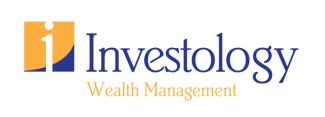Are you anxious about rising higher education costs? College can be a valuable experience, but it’s becoming less affordable since costs are growing at approximately 6% each year, which is more than twice the inflation rate.
However, with the proper foresight and knowledge, you can utilize...
For most people the difficult decision is not “if” they need life insurance, but “how much” life coverage they need.
Intro
With a new bear market settling in, new opportunities for a prosperous investment can feel few and far between. However, this current bear market caused by the COVID-19 crisis feels like a new beast entirely. In many ways, the US’ economy has been turned upside-down by this infectious disease...
An increasing number of people are starting to understand that their real risk exposure is not in the costs associated with repairing or replacing their car or home, rather it is in the far more costly liability risk. Yet, most people drastically underestimate their personal liability risks.
It seems remarkable that more than one in seven drivers in the United States is uninsured. But with the slumping economy, that number is expected to increase. And that doesn’t account for the millions more who can only afford to buy the minimum liability coverage that is required by state law.
Critics of whole life insurance point to the higher premiums these plans require and the inflexibility of the payment schedule.
With the average life expectancy surpassing age 85, the number of people who will require some sort of assistance performing daily living functions can be expected to increase dramatically. Already one in three people age 65 and older will receive care in a nursing home or through a home caregiver. After age 74, there’s a 50% chance of needing assisted care.
Green, clean energy has reached new heights in America. There are more hybrids than ever on the streets (Americans bought their four millionth hybrid car in early 2016), wind turbines out above the cornfields, solar panels on roofs, and even that new convenience store down the street is LEED certified.
For anyone who has purchased life insurance, most would agree that it is one of the most critical financial moves they could make. Yet, many people fail to give their life insurance purchase the meaningful consideration it requires. A life insurance purchase is for life, which means there are no “small” mistakes when purchasing it, only big, costly ones.
For some a car is simply a means of getting from point A to point B. For others it’s a status symbol. Cars are a hobby, a passion, for some and necessity for others, but whatever the level affinity toward automobiles there comes a time where just about everyone needs to start shopping for a new (or used) one. But, don’t run down to the local dealership just yet.
Unquestionably, disability insurance is more complicated than other forms of insurance. There are a lot of moving parts to understand in order to create the right kind of coverage, which may be one reason why many people are reluctant to look into it.
It is no secret that the typical American is working long hours with little respite compared to other countries with large economies. Full-time employees report an average work week of 47 hours and four out of 10 American workers say they work over 50 hours a week.













